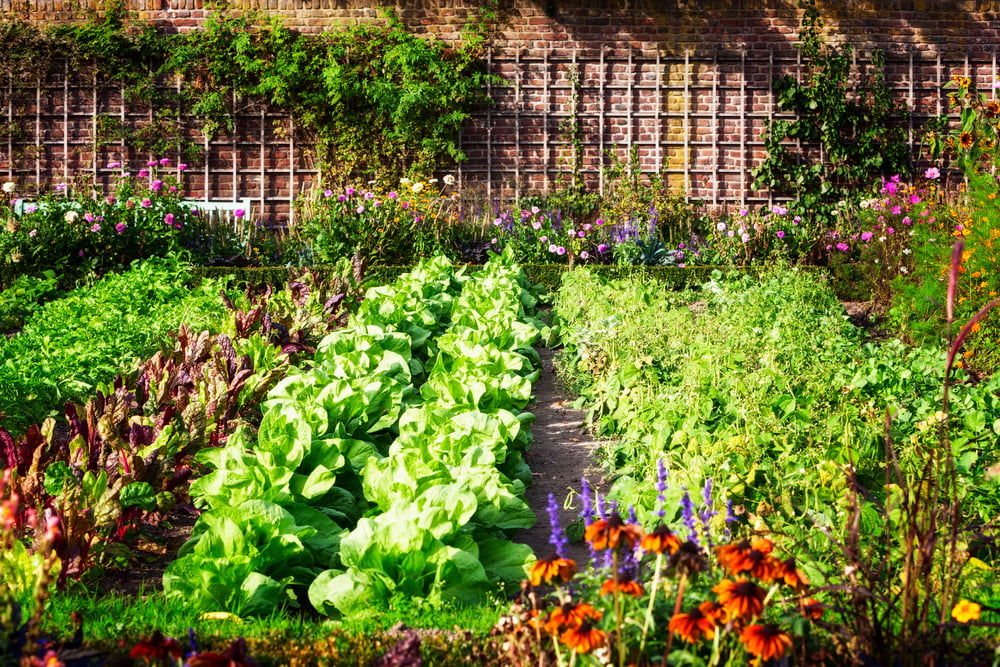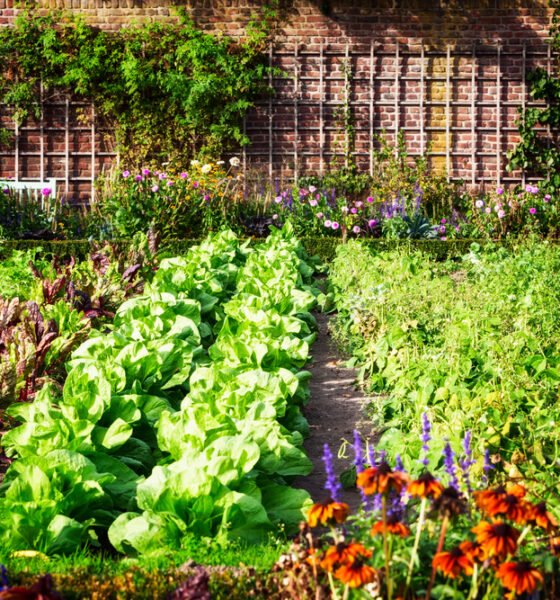

Environment
The Lifecycle of Eco-Friendly Hydroponic Gardens
You can cut your carbon footprint considerably by growing your own food. Around 35% of Americans have their own gardens. Today, we are going to talk about a very effective gardening tip that involves hydroponics.
We have written about some of the ways that you can grow an eco-friendly garden. However, one thing that we didn’t talk about in much detail is the benefit of using hydroponics.
Do you want to enjoy the benefits of homegrown produce without making a lot of effort? Hydroponic indoor gardening is the answer for you!
Hydroponic Gardening is a Great Eco-Friendly Way to Grow Food
Are you interested in joining the eco-friendly garden movement? You may want to try hydroponic gardening.
With this guide, you will learn about the entire lifecycle of a hydroponic indoor garden and what it takes to grow healthy plants. Prepare to harvest delicious and nutrient-rich veggies right from your home! The nice thing about these practices is that they are all very eco-friendly!
Therefore, it should not be surprising to hear that hydroponic gardening is becoming a lot more popular. It is growing at a rate of 20% a year.
When it comes to hydroponic indoor gardening, the right setup will ensure the successful growing of plants and the optimization of space. When selecting a hydroponic system, there are numerous points to consider such as cost, maintenance requirements, and the size of your available growing area.
Your choice should depend on the type and number of plants or crops you intend to grow. Hydroponic systems can range from simple, soil-based setups for single pots or grow bags up to complex multi-layered racks with mixtures of various methods that provide the necessary components for healthy plant growth.
In general, systems like a self-watering wick method—which uses an easy top-up piping system—require very little ongoing attention and are suitable for a beginner gardener. These are good options for small spaces since they fit in well with other decor items. Aeroponics systems use mister sprays or drippers to deliver nutrient formula directly to plant roots and allow for more efficient use of space than traditional gardening methods.
Alternatively, a nutrient film technique (NFT) is when a thin stream of the nutrient formula is pumped through channels between the rooting plates; this is great if you plan on growing leafy greens or herbs because it requires less water usage than other hydroponic systems while still providing plenty of oxygen exchange between roots and soil mediums.
Plant Selection
It is important to consider the amount of light they will require, as well as any special nutrients or soil needs they may have. You also need to consider the climate of your home, as some plants are better able to tolerate colder temperatures than others. If you are in a very dry climate, humidity and temperature become even more important factors.
Some plants commonly grown hydroponically indoors include basil, lettuce, chard, and other greens, peppers, tomatoes, and cucumbers. Hydroponic indoor gardening is also suitable for flowers such as roses or lilacs. It is important to understand that not all varieties of plants can be grown hydroponically indoors – some may not be able to easily go from the seedling stage all the way into maturity without special care.
The type of light used for hydroponic indoor gardens is also a very important part of plant selection. LED lights provide plenty of light intensity and are perfect for hydroponic systems because they use only 90W per 4’x4’ surface area and emit less heat than other types of fixtures. Additionally, LED lights come in a variety of spectrum output options that can be selected that best suit the type of plant you are growing in order to ensure maximum yield and quality during growth cycles.
Planting and Germination
Many gardeners prefer heirloom varieties over hybridized varieties as they are more likely to successfully germinate in a hydroponic system. Once ready for germination, the seeds must be placed in a nutrient solution and maintained at the ideal pH and temperature for successful germination. In most cases, hydroponics will require slightly different environmental conditions compared to traditional soil-based gardening.
Once the seed has been submerged, then it is just a matter of waiting for them to break open and sprout roots. Germination can take anywhere from 24 hours up to 2 weeks depending on the type of seed used and external conditions like temperature and humidity. Seed growers should pay attention to water temperature; too cold or too hot can impede germination.
After sprouting, seedlings begin harvesting nutrients from their immediate environment as they grow into full-sized plants ready for harvest!
Nutrient Management
Nutrients play a crucial role in the growth of a seedling into a mature plant, but it’s important to carefully monitor their presence and distribution. Hydroponic systems come with prepared nutrient solutions that are created specifically to nurture hydroponically grown plants, but the specific formulation of the solution should be tailored to the individual needs of the plants being grown.
The nutrition profile of a hydroponics solution is typically composed of macronutrients and micronutrients. Macronutrients are elements essential for normal metabolic functioning and are required in large quantities. Macronutrients include Nitrogen (N), Potassium (K) Phosphorus (P), Calcium (Ca), Magnesium (Mg), and Sulfur (S). Micronutrients are nutrients needed in smaller amounts, such as Chloride, Boron, Manganese, Iron, Zinc, Copper, Molybdenum, and Cobalt among several others. Each element plays an important role in promoting healthy growth and should be closely observed so that ppm values are neither too high nor too low.
pH Level
Every water source has a different chemical composition which can affect the plant’s ability to absorb nutrients. A pH level between 5 and 7 is generally considered ideal; thus, proper qualification of water sources and adjustment if necessary is important for encouraging healthy growth and preventing pH shock due to fluctuating levels during irrigation refills.
Most growers have root rulers that they use in conjunction with test kits favored by the aquaculture industry which analyze the water’s pH level quickly without manual collection, making testing much easier than it used to be. For those without such testing accessories, store-bought pH kits are available to help monitor resources instead of relying on general consensus rather than personal calibration using home chemistry sets occasionally needed before test kits were manufactured specifically for hydroponics gardening usage.
Harvesting
Depending on the crop, harvesting can take anywhere from months to a couple of weeks. During harvest, fruits, vegetables, and other plant products are usually picked in small batches to ensure the best quality, flavor, and nutrition possible. Many indoor gardeners have customized harvesting strategies based on their personal preferences and the consistency of their growing conditions.
Prior to harvesting, plants should be gently examined for any pests or issues that may have arisen during growth. By regularly checking leaves, stems, and roots it is possible to alleviate any potential issues before they become serious problems. Once ready for harvesting, crops can be carefully cut or pulled from the growing medium with clean scissors or hands respectively. To prevent cross-contamination, warm water or mild soapy solutions are often used when cleaning harvests prior to being placed in storage containers or bags. Used supplies like gloves should be thrown away after each harvest as well.
Hydroponics is a Great Way to Create Eco-Friendlier Gardens
Indoor hydroponic gardening is a great eco-friendly way to produce healthy, organic crops without taking up too much space. By understanding the lifecycle of hydroponics and having a good plan in place for each step, you can ensure that your harvest will be fruitful for years to come. From selecting the right seedlings to harvesting your crop, following these steps will make this process easier than ever before. With patience and dedication, you’ll soon have an abundant garden full of nutritious fruits and vegetables!


 Environment9 months ago
Environment9 months agoAre Polymer Banknotes: an Eco-Friendly Trend or a Groundswell?

 Environment11 months ago
Environment11 months agoEco-Friendly Home Improvements: Top 7 Upgrades for 2025

 Features8 months ago
Features8 months agoEco-Friendly Cryptocurrencies: Sustainable Investment Choices

 Features9 months ago
Features9 months agoEco-Friendly Crypto Traders Must Find the Right Exchange

















